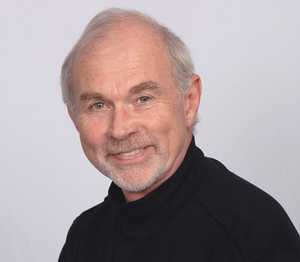AES Milan 2018
Wednesday, May 23, 13:00 — 14:00 (Arena 3 & 4)
SE01 - Opening Ceremonies
Presenters:Bob Moses, AES - Vashon Island, WA, USA
Marina Bosi, Consulting Professor at Stanford University and a Founding Director of the Digital Media Project - Stanford, CA, USA
John Krivit, Audio Engineering Society - Marblehead, MA, USA; Emerson College - Boston, MA, USA
Alberto Pinto, CESMA - Lugano, Switzerland; Milan, Italy
David Scheirman, Bose Professional - Carlsbad, CA USA
Nadja Wallaszkovits, Phonogrammarchiv, Austrian Academy of Science - Vienna, Austria; NOA GmbH - Vienna, Austria
Opening Remarks:
• Executive Director Bob Moses
• President David Scheirman
• Convention Co-chairs Nadja Wallaszkovits and Alberto Pinto
Program:
• AES Awards Presentation by Alex Case, AES Past President
• Introduction of Keynote Speaker by Convention Chair
• Keynote Address
Awards Presentation
Please join us as the AES presents Special Awards to those who have made outstanding contributions to the Society in such areas of research, scholarship, and publications, as well as other accomplishments that have contributed to the
enhancement of our industry. The awardees are:
BOARD OF GOVERNORS AWARD
• Maurycy Kin
• Sascha Spors
• Nadja Wallaszkovits
• Toon van Waterschoot
This year’s Keynote Speaker is Marina Bosi, AES Past-President and Consulting Professor, Stanford University. The title of her keynote address is "How Perceptual Audio Coding Has Shaped Our Lives."
Wednesday, May 23, 20:00 — 21:30 (off-site 1)
SE02 - Organ Concert (20:00 – 21:30)
Chiesa Cristiana Protestante
Via Marco de Marchi, 9, 20121 Milano
AES conventions have entertained delegates with an organ concert for many years and this year is no exception. Please join organist Alberto Pinto at Chiesa Cristiana Protestante. The Organ in the Protestant Church of Milan is one of the most interesting instruments of Northern Italy. Designed under the consultancy of Prof. Luigi Ferdinando Tagliavini in 1969 and built by one of the major Italian organ builders, the Tamburini Pontifical Organbuilding firm of Crema (Italy), it represents the first example in Italy of modern organ endowed with a Rückpositiv. His timbers, all very characterized, can be fully appreciated into every details also thanks to the rather dry acoustics of the church.
Program:
Johann Pachelbel (1652-1706)
- Praeludium in D minor
- Ciacona in F minor
Georg Böhm (1661-1733)
- Choral-prelude “Vater unser in Himmelreich”
Dietrich Buxtehude (1637-1707)
- Praeludium in D major, BuxWV 139
- Nun bitten wir den eiligen Geist, BuxWV 209
- Komm, Heiiger Geist, Herre Gott, BuxWV 199
Nicolaus Bruhns (1665-1697)
- Praeludium in G major
—— Short Interval ——
Johann Sebastian Bach (1685-1750)
- Prelude and fugue in A minor, BWV 543
Chorale prelude from the Leipzig Autograph ("The Eighteenth”):
- “An Wasserflüssen Babylon”, BWV 653
- Trio Sonata N.5 in C major, BWV 529
1. Allegro
2. Largo
3. Allegro
- Passacaglia et Thema Fugatum in C minor, BWV 582
View PDF of Organ Recital Flyer
Thursday, May 24, 18:30 — 20:00 (Arena 3 & 4)
SE03 - Heyser Lecture
The Richard C. Heyser distinguished lecturer for the 144th AES Convention is Malcolm Hawksford, Emeritus Professor and recent AES Gold Medal Winner. The title of his talk is "Understanding High Quality Audio —A Personal Journey."
Audio engineering is bounded by theoretical principles that ultimately establish what can be achieved in practical terms. The mapping of theory into a practical realization is inevitably moderated by system-specific approximations and increasing entropy as information travels through an audio system. While the theory may be deceptively simple, the means of implementation can embrace diverse concepts and ingenious design techniques. My career as an academic and researcher mirrors this diversity, which has witnessed remarkable transformations as the industry has adapted from analogue to digital (and back again!). Working with highly talented students, my research projects have been principally motivated by an underlying ambition to extend the horizons of sound reproduction. Alongside personal reflections about factors critical to high quality sound reproduction, my lecture will concentrate on important circuit and system factors, both analogue and digital. A new means of down-sample rate conversion will be demonstrated too.
Biography
Malcolm O. J. Hawksford was educated at Aston University in Birmingham, UK where he received his B.Sc. with first-class honors in 1968, Ph.D. in 1972 and D.Sc. in 2008. He is now Emeritus Professor within the School of Computing Science and Electronic Engineering at Essex University, Colchester, UK. Early research embraced delta- and sigma–delta modulation (SDM) applied to color TV coding that under the award of a BBC Research Scholarship lead to a method of luminance and chrominance multiplexing exploiting digital time-compression, a forerunner of MAC/DMAC. Principal interests include audio engineering, electronic circuit design, error correction in amplifiers and signal processing focusing on loudspeakers, SDM, PWM linearization, spatial audio and telepresence. Malcolm is recipient of the AES Publications Award for the best contribution by an author of any age for JAES, volumes 45 and 46 and holds the AES Silver Medal awarded 2006 for major contributions to engineering research in the advancement of audio reproduction. Also, in 2014 he was awarded the Peter Barnett Memorial Award by the Institute of Acoustics, UK for his contributions in the field of electroacoustics extending over 4 decades. He is a chartered engineer and fellow of the AES, IET, and IOA. Malcolm has been formative chair of the AES Technical Committee on High-Resolution Audio and was a founding member of Acoustic Renaissance for Audio (ARA).
Friday, May 25, 11:15 — 12:15 (Arena 3 & 4)
SE04 - Back to the Future, a Technology Project Review: Outdoor Sound Reinforcement of Symphony and Opera for Extremely Large Audiences
Presenter:David Scheirman, Bose Professional - Carlsbad, CA USA
Serving audiences up to 200,000 persons for outdoor operatic and symphonic programs, a fully-distributed portable sound reinforcement system was deployed in public parks throughout New York City including Central Park. Supporting onstage sound from a tensile-membrane acoustical shell designed in a 36m (118 ft) wide and 21m (68 ft) high pyramid-like structure for the US $3.385M outdoor music pavilion, 24 battery-powered, digitally-delayed portable loudspeaker towers received wireless transmissions from a centrally-located mixing position to cover asymmetrical audience areas. A 24m (78 ft) wide stage area was served with only seven microphones. From 1991-95, the author led a team to deploy and operate this futuristic outdoor sound reinforcement system, pioneering innovative and advanced technologies now taken for granted. System design attributes and operating principles are detailed.
Friday, May 25, 16:30 — 18:00 (Arena 3 & 4)
SE05 - Audio Aesthetics—Designed for the Future
Presenters:Jacob Mathew, Echelon Audio - Portland, OR, USA
Andrea Pivetta, Andrea Pivetta - Cogollo del Cengio, Vicenza, Italy
With Milan as the home for the Audio Engineering Society's 144th Convention, this special event is dedicated to the aesthetics of audio design and in particular the innovative world of loudspeaker design aesthetics. Focusing on the work of a selection of inspirational audio designers, the session will introduce a brief history of audio design; design principles; design processes; technologies; and the materials that are being used to develop these icons of audio.
Friday, May 25, 20:00 — 23:00 (off-site 1)
SE06 - Banquet (20:00 – ???)
Grand Hotel Et De Milan
Via Alessandro Manzoni, 29, Milano
20:00 – 23:00
Come and enjoy an evening in Milan with your colleagues.
For this year’s banquet join us in the heart of Milan at the
famous Grand Hotel Et De Milan (www.grandhoteletdemilan.it/en) an 18th-century mansion best known as the Milanese house to Giuseppe Verdi, where the composer wrote the “Othello” and “The Falstaff.” Conveniently located on Via Manzoni, facing fashionable Via Montenapoleone, the Grand Hotel et de Milan is only a few minutes walk to La Scala Opera House, The Duomo Cathedral, and the Galleria Vittorio Emanuele.
After the aperitif served in the large Chimney Hall and in the adjacent Gerry’s bar, we will move to Puccini lounge for the dinner. Decorated with a prestigious collection of paintings by Maria Luigia d’Austria, Puccini lounge represents a classic example of the nineteenth century liberty architecture. The menu includes a 3-course meal with traditional Milanese dishes, a selection of wines, coffee, and friandises.
The Grand Hotel Et De Milan is in the very center of Milan. From NH Hotel it is easily reachable by Metro. The transfer takes about 45 minutes: take Metro Line 2 - green - (direction to “Cologno Nord” or “Gessate”) for 12 stops, change to Metro Line 3 - yellow - in “Centrale FS” (direction to “Comasina” or “San Donato”) and get off after 3 stops at “Montenapoleone”, right in front of the Grand Hotel.
Note that you need the extra-urban ticket (2,5 Euros) to go from NH to the city center.
Tickets will be available at the registration area. Spacing is limited.
Saturday, May 26, 10:30 — 12:00 (Arena 3 & 4)
SE07 - Immersive Audio for Reality or Virtual Reality—Does it Make a Difference?
Chair:Daniel Deboy, DELTA Soundworks - Germany
Panelists:
Tom Ammermann, New Audio Technology GmbH - Hamburg, Germany
Felix Andriessens, Ton und Meister - Germany
Ana Monte, DELTA Soundworks - Germany
Tom Parnell, BBC Research & Development - Salford, UK
Martin Rieger, VRTONUNG - Germany
Agnieszka Roginska, New York University - New York, NY, USA
Christian Sander, Dear Reality GmbH - Germany
Christian Vaida, cvmusic film/ton - Germany; au3Dio
In this roundtable discussion we invite experts in the field of immersive audio production for music, cinema, and 360° film content to discuss similarities and differences regarding formats, workflows, and aesthetics. Channel and object based immersive audio systems as well as headphone virtualization using binaural rendering both are trending topics in audio production. With the rise of new applications like virtual reality, 3D audio in cinema, and home entertainment, compatibility for cross-platform distribution is more and more requested, yet engineers often are only familiar with either playback on loudspeaker arrays or binaural rendering. In this event we will try to settle a common ground for all production types and look at the different requirements, both from a technical and aesthetic point of view.

